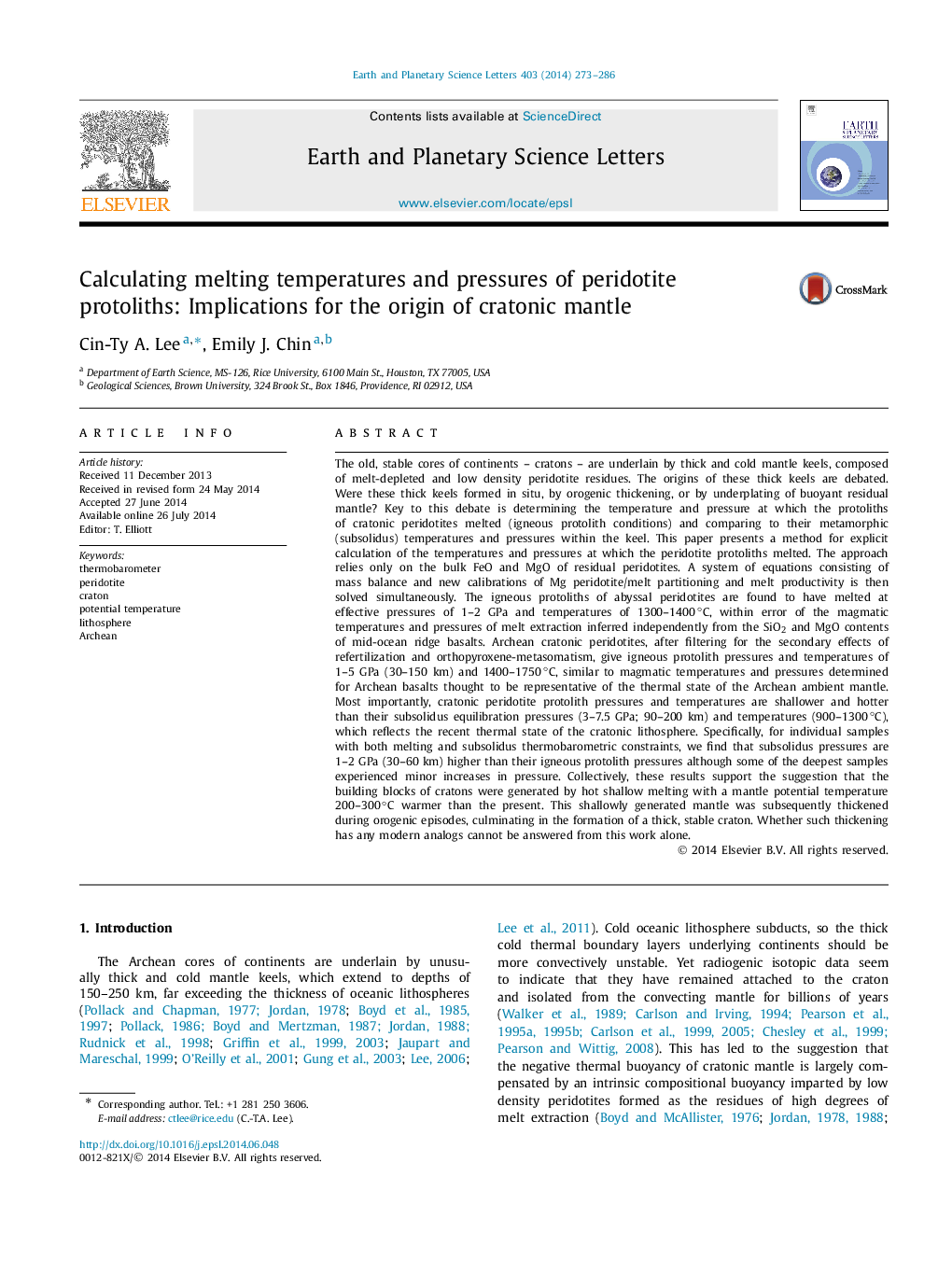| کد مقاله | کد نشریه | سال انتشار | مقاله انگلیسی | نسخه تمام متن |
|---|---|---|---|---|
| 6429128 | 1634753 | 2014 | 14 صفحه PDF | دانلود رایگان |
- Thermobarometric constraints on pressure and temperature of peridotite melting.
- Cratonic mantle protoliths melted at shallow pressures.
- Cratonic mantle peridotites have experienced an increase in pressure.
- Orogenic processes are necessary for the stabilization of cratons.
The old, stable cores of continents - cratons - are underlain by thick and cold mantle keels, composed of melt-depleted and low density peridotite residues. The origins of these thick keels are debated. Were these thick keels formed in situ, by orogenic thickening, or by underplating of buoyant residual mantle? Key to this debate is determining the temperature and pressure at which the protoliths of cratonic peridotites melted (igneous protolith conditions) and comparing to their metamorphic (subsolidus) temperatures and pressures within the keel. This paper presents a method for explicit calculation of the temperatures and pressures at which the peridotite protoliths melted. The approach relies only on the bulk FeO and MgO of residual peridotites. A system of equations consisting of mass balance and new calibrations of Mg peridotite/melt partitioning and melt productivity is then solved simultaneously. The igneous protoliths of abyssal peridotites are found to have melted at effective pressures of 1-2 GPa and temperatures of 1300-1400â°C, within error of the magmatic temperatures and pressures of melt extraction inferred independently from the SiO2 and MgO contents of mid-ocean ridge basalts. Archean cratonic peridotites, after filtering for the secondary effects of refertilization and orthopyroxene-metasomatism, give igneous protolith pressures and temperatures of 1-5 GPa (30-150 km) and 1400-1750â°C, similar to magmatic temperatures and pressures determined for Archean basalts thought to be representative of the thermal state of the Archean ambient mantle. Most importantly, cratonic peridotite protolith pressures and temperatures are shallower and hotter than their subsolidus equilibration pressures (3-7.5 GPa; 90-200 km) and temperatures (900-1300â°C), which reflects the recent thermal state of the cratonic lithosphere. Specifically, for individual samples with both melting and subsolidus thermobarometric constraints, we find that subsolidus pressures are 1-2 GPa (30-60 km) higher than their igneous protolith pressures although some of the deepest samples experienced minor increases in pressure. Collectively, these results support the suggestion that the building blocks of cratons were generated by hot shallow melting with a mantle potential temperature 200-300â°C warmer than the present. This shallowly generated mantle was subsequently thickened during orogenic episodes, culminating in the formation of a thick, stable craton. Whether such thickening has any modern analogs cannot be answered from this work alone.
Journal: Earth and Planetary Science Letters - Volume 403, 1 October 2014, Pages 273-286
